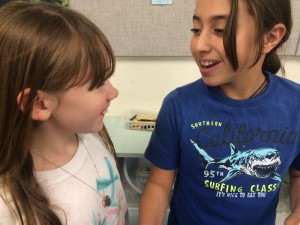 January, February, and the beginning of March make up Bixby’s science fair season, when 2nd through 5th graders are asked to call upon a variety of skills. They brainstorm, budget their time, and practice the scientific method. They try to measure carefully, learn the science behind their testing, and discern a workable topic from an unworkable one. It’s a demanding time for students! One of the most important and perhaps challenging skills they learn and practice is collaboration.
January, February, and the beginning of March make up Bixby’s science fair season, when 2nd through 5th graders are asked to call upon a variety of skills. They brainstorm, budget their time, and practice the scientific method. They try to measure carefully, learn the science behind their testing, and discern a workable topic from an unworkable one. It’s a demanding time for students! One of the most important and perhaps challenging skills they learn and practice is collaboration.
During this time, science classes are spending a few minutes each day explicitly focused on what it means to be a good partner. We begin with a scenario. What if one teammate loves a science fair idea that his or her partners hate? What if a partner loses focus? What if best friends are assigned to separate groups? First, classes discuss the scenario, so students can share their concerns and offer solutions. Then we model for each other and role-play, which helps children form a clear visual of what effective collaboration looks and sounds like. After modeling and role-playing, students are asked what they’ve noticed, giving them a chance to zero in on important points. I hear comments like, “I noticed when you found out who your partner was, you didn’t go crazy,” or “You didn’t tell them their idea was terrible.” Students then practice what they saw.
 Science fair projects are packed with learning opportunities for this age group. One of the most important is developing the necessary skills to do all that learning together. I’ve placed more emphasis on the explicit teaching of collaboration than I have in past years, and I’m excited about what I see. These lessons are giving Bixby’s young scientists touchstones they can turn to when partners disagree.
Science fair projects are packed with learning opportunities for this age group. One of the most important is developing the necessary skills to do all that learning together. I’ve placed more emphasis on the explicit teaching of collaboration than I have in past years, and I’m excited about what I see. These lessons are giving Bixby’s young scientists touchstones they can turn to when partners disagree.



